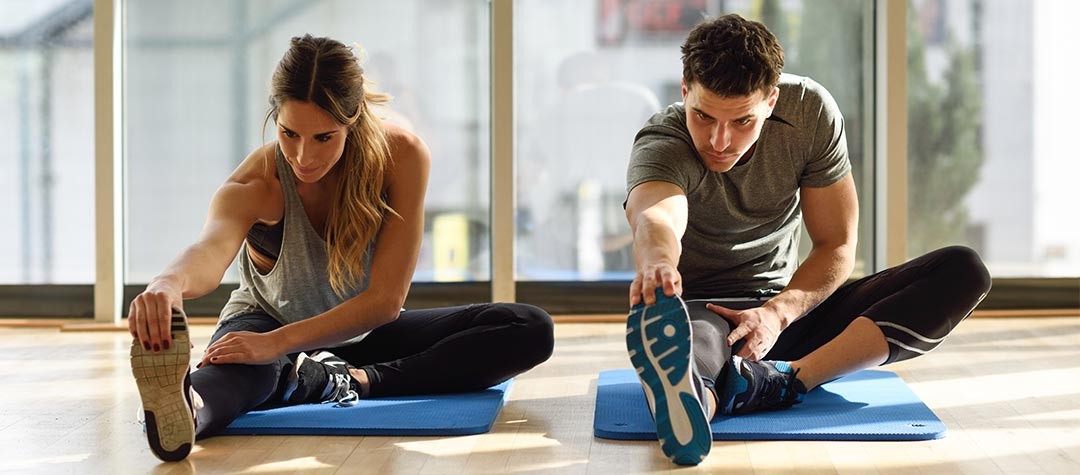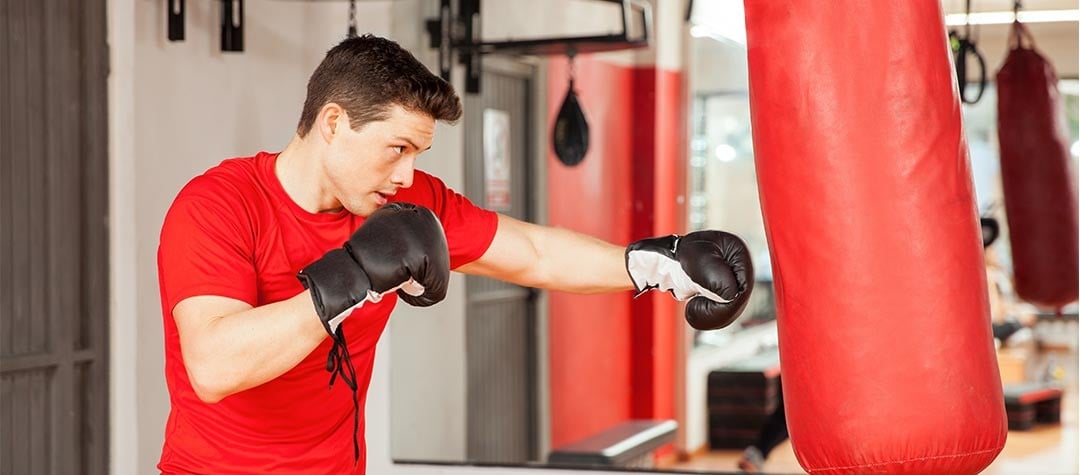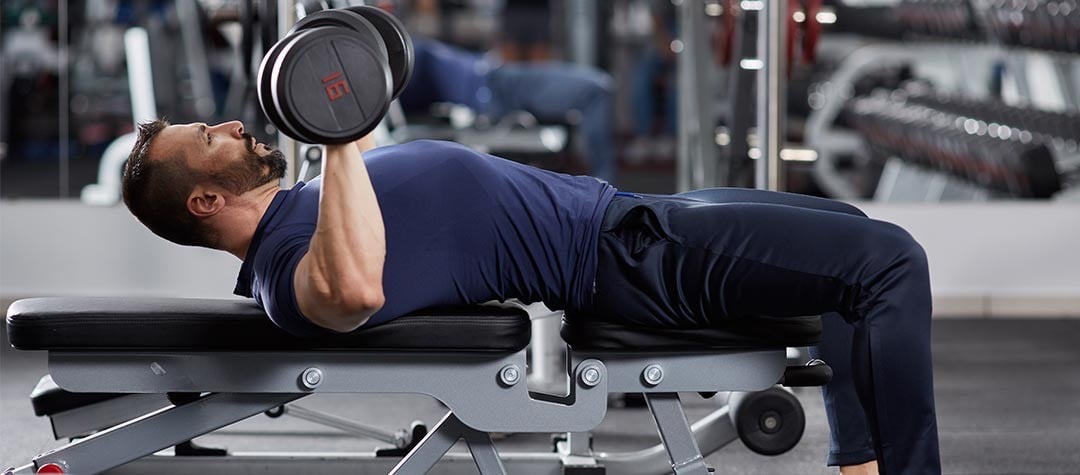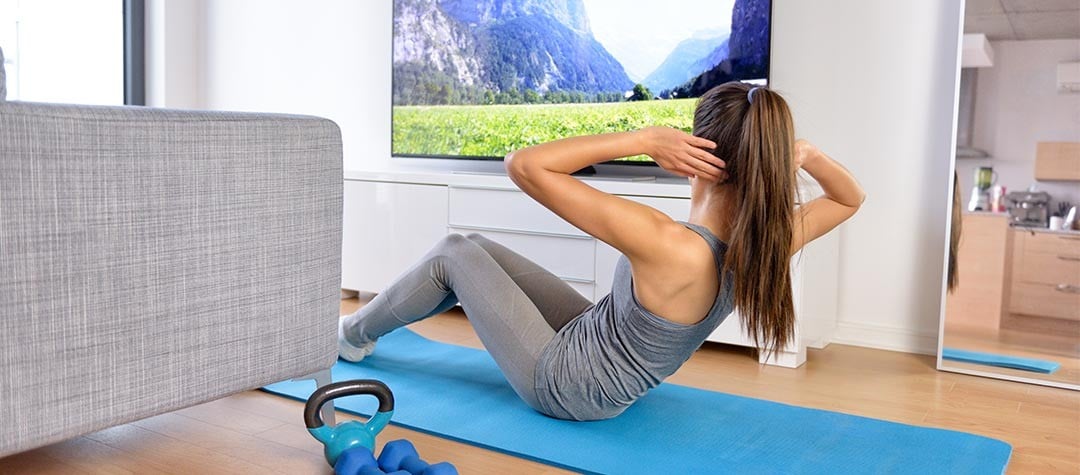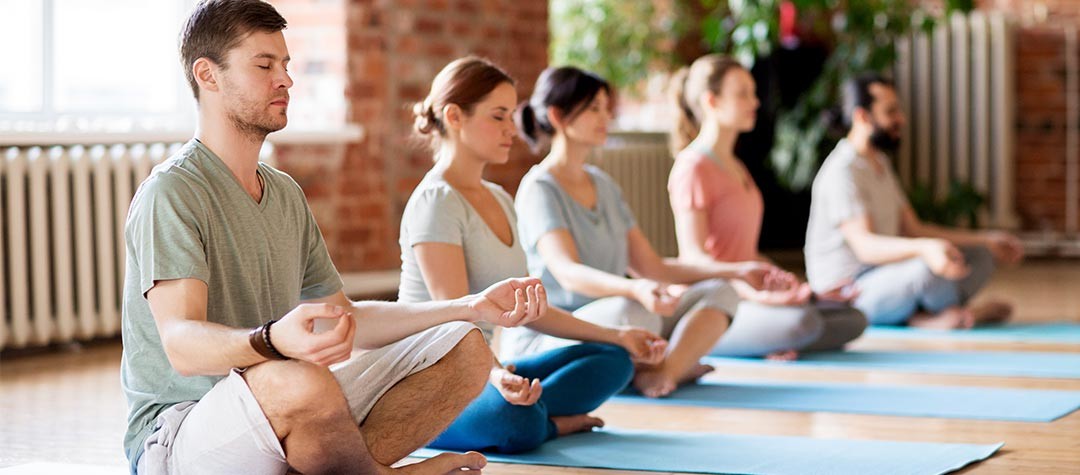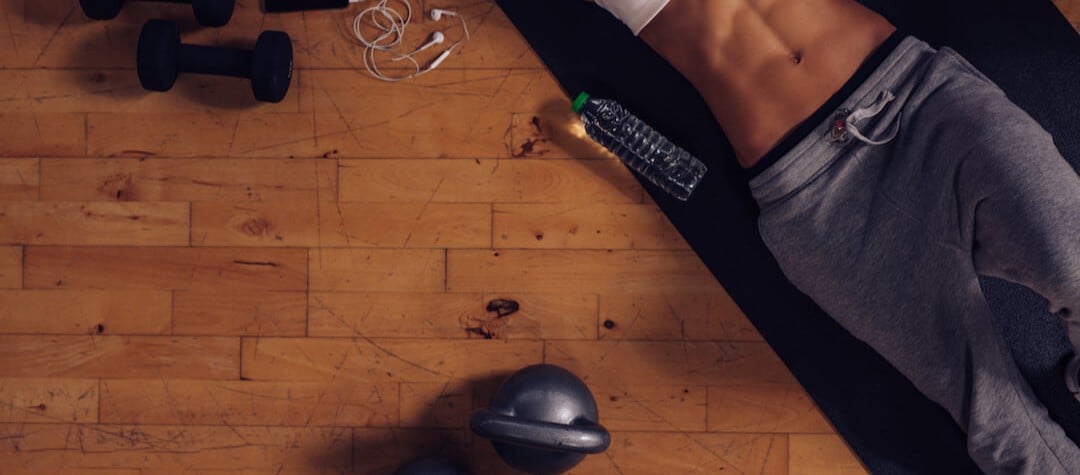Want to know how to get the most out of a workout? Structure your workouts this way to maximise each session.
Knowing what exercises are best to fit your body and aims can sometime be a daunting task, particularly if new to working out or the gym. But structuring your workouts can be just as important as their duration and intensity. Ensuring that these elements are satisfied can improve your workout significantly.
To get the most out of your training sessions, you should adhere to the following sequence each time you train, to ensure that you are prepared for exercise, working hard and aiding recovery:
- Warm-up
- Mobilisation
- Main exercise session
- Cool-down
- Stretch
1. Warming-up for exercise
Why do you need to warm-up?
Next to rest, your warm-up is arguably the most important component of your training. The warm-up prepares you physically and mentally for your training session and without a warm up your body will not be able to perform efficiently and could even cause injuries.
Warming up gets the blood flowing around the body, this is for a number of reasons; to increase blood flow to the muscles and tissues allowing them to be more elasticated, providing more oxygen for movement and preventing injury or soreness from exercise.
Warming-up helps regulate body temperature and assists the production of sweat to cool it down if overheating. It also increases the conductivity of nerve impulses, helping your muscles move more smoothly and help maintain your balance.
Components of an exercise warm-up:
Warming-up doesn’t mean jogging on the spot for a few seconds when you walk into the gym and then moving straight onto a demanding exercise. Your warm-up should comprehensively prepare your body for your exercise session, ensuring sufficient blood flow and injury prevention before exercise.
As a general rule, your warm-up should last for approximately 10 minutes and encourage the loosening up of joints and muscles along with the movement of fluids around the body. Warm ups should start off relatively gently as diving in the deep end to a warm-up would be self-defeating, but you should aim after a few minutes of gentle exercise to hitch up the intensity. By the end of your warm-up you should feel limber, have a steady heartbeat and begin to perspire. Whatever is ideal for you, swinging movements, skipping rope, jogging or even stretching , as long as it loosens you up and gets your heart pumping, the warm-up has done its job.
2. Mobility
Mobility exercises are important to ensure full limb, joint and muscle movement and extension before exercising. They causes synovial fluid (a joint lubricant) to flow liberally within the joint, making movements easier. These exercises are not stretches but are purely designed to loosen up the body in preparation for the main session. Doing these alone in-place of a workout will not be sufficient to ensure that your body is adequately prepared for its training, but ensuring muscles and joints are prepared for extensive movement is important to improve exercise and avoid injury.
Rotating joints, neck flexion, arm and leg swings, hip rotations and others can all help limber up the body and prepare it for exercise. Simple stretching is also advised to ensure sufficient blood flow to the muscles, aiding elasticity and avoiding injury when exercising.
3. Main exercise
Once the heart is pumping and your joints and muscles nice and loose it is now time to get down to business and start your exercise. Varying on the individual, aims and abilities, your workout completely depends on what you want from it and what you're capable of. Intensity, duration and specific exercises depend on how fit and able you are.
If you have high stamina and strength you will be able to exercise for longer and of higher intensity than a workout beginner, but exercising efficiently all comes down to pushing yourself. The aim of exercise is to get your heart bumping and the body sweating, this requires maybe adding a little bit of weight to the machine or hitching up the speed on the treadmill, allowing you to progress and improve.
Generally working out is broken down into two groups of exercise, weight or resistance training and cardiovascular.
Cardio:
Aerobic exercise, cardio, is the energy process engaging the cardiovascular system for low to high intensity movement. Cardio exercise is considered the ideal form of workout to burn calories, requiring oxygen and a more intensified supply of energy to keep the body moving. Requiring the major use of the lungs, heart and blood vessels, cardio is considered as the ideal workout if trying to increase fitness, stamina and improve health. Easily done both inside and out of the gym, cardio exercise encompasses a broad range of activities for you to pick and choose your favorites.
Examples of cardio exercises and classes range greatly:
- Walking
- Jogging
- Cycling
- Rowing
- Cross-training
- Dancing
- Swimming, and many more.
Plain old running doesn’t interest you? No problem! Many gyms and fitness centres have utilised the popularity of cardio exercises by offering a broad range of classes that you can take part in, either with friends or by yourself. These range from zumba and dance classes, to spin class and even water aerobics, helping you enjoy exercise and get fit through your favorite activities.
Resistance:
Resistance and weight training still provide similar benefits as cardio, improving health and fitness, but instead of using the cardiovascular system as its main target, instead it engages muscles and the anaerobic systems of the body. Do not assume that weight or resistance training is only for bodybuilders, picking up the dumbbells or doing some bodyweight exercises won't turn you into schwarzenegger overnight.
To dramatically increase muscle size requires committed, extensive training and a careful diet regime. Instead resistance exercises can help increase muscle strength and tone, yes lifting weights may change the shape and size of your muscles but you wont turn into the michelin man anytime soon.
Whether in a class, using free weights or using the weight machines, resistance training brings many benefits including fitness, strength, improved mobility and posture, a happier heart, increased general well being and many more.
Some examples of easily done resistance training exercises:
- Plank variations
- Squats and lunges
- Arm raises and extension
- Push ups and chest press
- Bicep curls
Watching others working out and researching new exercises with weights or even against your body weight, in the gym or at home, is a great way to expand your workout repertoire targeting more muscles and getting a better workout. Trying new machines or exercises is a great way to keep your workout fresh, avoiding boredom and repetition that can accompany any resistance session.
4. Cool Down
Cooling down is an essential part of a workout, not only physiologically but mentally. Decreasing heart rate back to its ideal pace, restoring body temperature, relaxing muscles, increasing flexibility and bringing your mind to a more peaceful and relaxed state.
Decreasing your heart rate too quickly when concluding your exercise this can cause your blood pressure to drop too quickly, resulting in dizziness and even vomiting. Not the best way to finish a workout. Cooling down can also assist the expulsion of toxins and lactic acid, released by the muscles when oxygen is in limited supply, particularly in anaerobic exercise. When these toxins remain in the muscles, this is what causes the soreness usually felt the following day after strenuous exercise, and cooling down can help avoid this, aiding quicker recovery.
How you cool down will be dependent on the type of exercise you carried out, if high intensity cardio a lesser intensive aerobic exercise will be ideal to drop the heart rate and restore the body to its natural state. For example, after a tiring jog, gradually decreasing your speed to a walk or walking uphill will be best to cool down option. If weight training, exercises that can stretch out muscles such as slow incline walking or light exercise of the elliptical is ideal to cool down and begin stretching.
5. Stretching
When exercising, the muscles contract and expand quickly which inevitably shorten the muscles as the fibres rip. Stretching will loosen up your muscles elongating them back to their original shape, helping them recover quicker whilst helping to rid them of these pesky toxins that can exacerbate soreness. Stretching will also help recover the inflamed muscle fibres that rip during exercise, speeding up recovery, helping you see exercise result more hastily.
Stretching can also over time increase your flexibility , easing both muscle and joint movement after exercise which may have caused you to feel stiff and sore. A week of post-workout stretching won't turn you into an olympic gymnast but simple stretches and more advanced yoga moves can over time help you become that bit more bendy and help you get closer to reaching your toes.
What should you include in your plan
Knowing what exercises and workouts you should be doing to reach a particular aim is crucial to receive results and reach goals. Working out what you want and how best to tailor your workouts for you is an important step in anyones exercise regime. Check out these aims and exercises best suited to tailor your own workout.
1. Tailoring your workout to your goals
Ensuring you include the 5 workout components is crucial for a good session, but how you conduct your specific workout depends on the goals you are hoping to achieve. A person training for a marathon, or a bodybuilding competition or trying to lose weight will all require different workouts.
Try following some of these workout structures to help accommodate your specific aim.
2. Weight loss
Any form of exercise will be beneficial at burning up calories and helping you lose weight, and although you may think cardio would be the best way to lose weight, being an aerobic exercise therefore burning a higher yield of calories, it is in fact a combination of muscle training and cardio is ideal for weight loss.
Studies show that the combination group, of cardio and resistance, lost the most fat.
Aerobic exercise and classes burns around 390 calories per hour, which is closely followed by weight training that burns over 360 calories per hour, not a considerable difference considering how different these exercises are. Studies show that the combination group, of cardio and resistance, lost the most fat. 15 minutes of squatting for example can burn the same amount of calories as 15 minutes of climbing stairs!
Dont underestimate the power of weight training as it can be a much needed addition to the cardio rut many of us can get into. Weight training also builds muscle and increases the protein in the body, this by itself will encourage an increase of fat burning, how lucky our muscles can help us burn fat.
Once warmed up it is advised to start your workout off with a resistance training session, as you don't want to exhaust your muscles through cardio and not reap the benefits of weights. It is always good to fit in some cardio and so get that heart pumping in the latter part of your workout. Anything from squats, to weight machines, to bicep curls combined with a 20-30 minute jog or cycle is ideal to get that fat burning.
3. Strength and weight gain
If you want to bulk up and increase your muscle strength sticking to weights is obviously your best option. A short cardio session, around 10 minutes or so, is advised following your weight training to ensure that your aerobic system is engaged as well, but spending most of your time around the machines and dumbbells is perfectly acceptable. Generally weight trainers will tailor an exercise plan to work certain areas on certain days, allowing for appropriate muscle recovery before working them again.
As the bodybuilding sphere is growing more popularity, nutrition, supplements and exercises are available from numerous mediums all over the internet and social media, helping you find the ideal workouts and nutrition for your hopes.
Weight classes such as body pump and body part specific groups are ideal for weight training beginners as these classes will teach you the fundamental principles of resistance training. Keeping your knees bent, engaging the core, breathing techniques along with developing a basic catalogue of weight exercises, will all provide a useful base to then take to do by yourself.
4. Fitness endurance
When training for an event or just generally trying to increase stamina and fitness the general rule is start off slow. Begin with a pace that you know you can achieve and then over time increase your intensity and duration. This pushing yourself will demand more of your body, making you work harder each time, and when practiced over an extended period you will find your fitness slowly increasing.
When working towards a specific event it is obviously important to ensure you are well prepared and trained in that particular exercise. Whether running, cycling or whatever point you're leading up to, ensure enough hours practising that trade is crucial.
One common trend hitting gyms and fitness plans is the new form of fitness; high intensity interval training, otherwise known as HIIT. A form of cardiovascular training that involves alternating between intense periods of anaerobic training with less intense periods of recovery. Most easily done on cardio machines as they are easier to control, HIIT can be an effective way of demanding your heart to adjust to changing intensities, strengthening it and improving fitness.
5. Flexibility
If flexibility is your aim of exercise you can take it easier than these other types of exercise, by all means push yourself and try new things but the main focus of flexibility is less intense forms of exercise; yoga , pilates and so on. Although they may not get the heart pumping as much as going for a run, these sports fully engage your entire body, not only improving flexibility but strengthening a multitude of muscles both core and specific areas.
Yoga and pilates engage muscles at a less intense level, whilst still conditioning strength and recovery...
Alongside the peaceful and tranquil intentions of these sports, they also serve as a beneficial option for all athletes, whether holding a sore joint or muscle, or just hoping to strengthen and improve your core and flexibility. Ideal for post intense exercises, yoga and pilates engage muscles at a less intense level, whilst still conditioning strength and recovery, whilst gently bringing your heart rate to a healthy resting level.
If these relatively modern sports don't take your fancy, there are many other options available to increase your flexibility whilst keeping your heart rate going. Including gymnastics, tennis, martial arts, squash, surfing and many more can offer an alternative option to just simple stretching in the gym or at home.
Remember to ask for advice: if at a gym get advice from either other gym members or pts- that's what they're there for. If you're exercising out of a gym, search for articles on specific topics, follow blogs and check out fitness pages or sites on social media to learn new tips and exercises to improve your workout.

